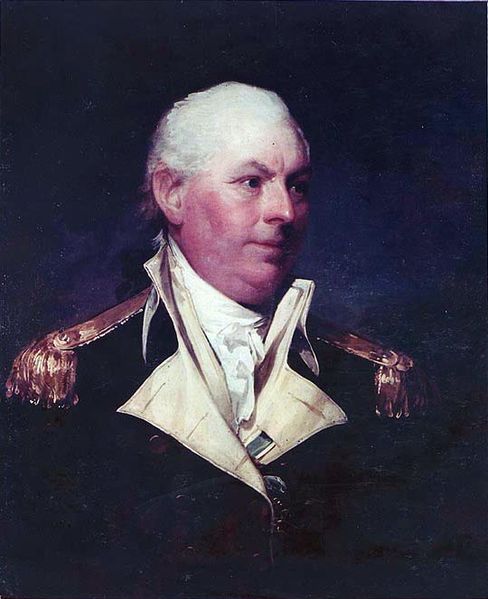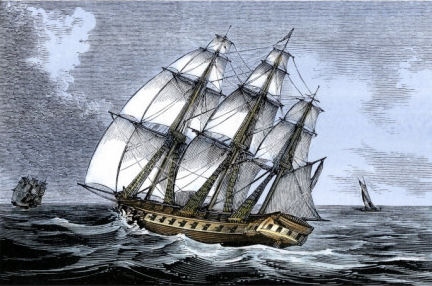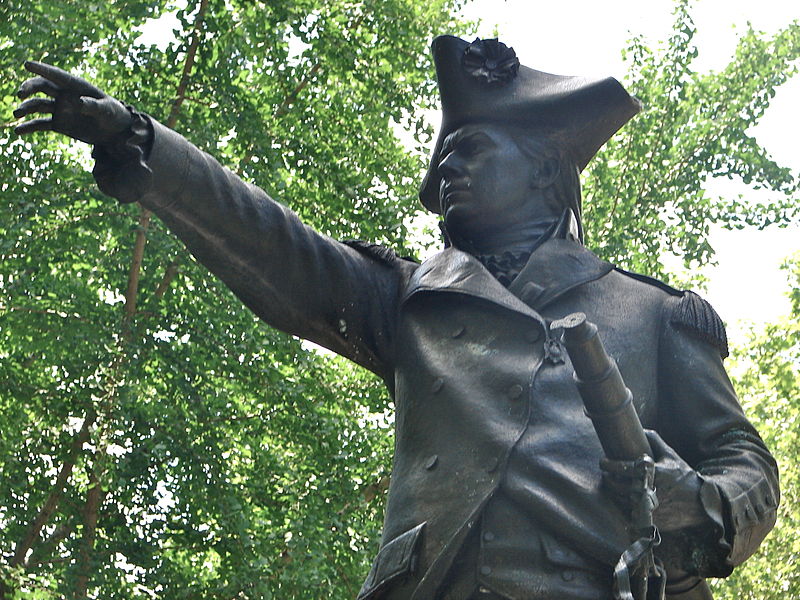Not until May 28th [1781] was there another opportunity found, when early on that morning an armed ship and a brig were discovered about a league distant. At sunrise they hoisted the English colors and beat drums. At the same time Captain Barry displayed the American colors. By eleven o’clock Captain Barry hailed the ship and was answered that she was the “Atalanta” ship-of-war belong to His Britannic Majesty, commanded by Captain Sampson Edwards. Captain Barry then told Captain Edwards that he, John Barry, commanded the Continental frigate the “Alliance” and advised him to haul down the English colors.
Captain Edwards replied, “Thank you, Sir. Perhaps I may after a trial.”
The firing then began. The “Alliance” had not wind enough for steerage way. The enemy being lighter vessels, by using sweeps got and kept athwart the stern of the “Alliance” so that she could not bring half her guns to bear upon them, and often but one gun out astern to bear on the two—thus lying like a log the greater part of the time. Captain Barry received a wound in the shoulder from a grape shot. He remained on the quarter-deck until exhausted by the loss of blood, when he was helped to the cock-pit for treatment. Soon the colors of the “Alliance” were shot away. This caused the enemy to believe the Americans had struck their colors. They gave three cheers and manned their shrouds expecting a surrender. But the colors of the “Alliance” were again run up—a breeze sprung up—a broadside was given the “Atalanta” and another given the “Trepassy,” the brig. They then struck their colors to the “Alliance.” Captain Smith, of the “Trepassy,” was killed. The Captain of the “Atalanta” was brought on board and taken to Captain Barry, wounded in his cabin. Captain Edwards advanced and presented his sword. Captain Barry received it but at once returned it, saying:
“I return it to you, Sir. You have merited it. Your King ought to give you a better ship. Here is my cabin at your service. Use it as your own.”
Martin I. J. Griffin, Catholics and the American Revolution (Philadelphia: self-published, 1909), Vol. II, p. 47.
Short Stories on Honor, Chivalry, and the World of Nobility—no. 184
Nobility.org Editorial comment: —
A properly structured society is not caste-like, where no transition is envisioned from one class to another. On the contrary, outstanding individuals should be allowed to ascend to a higher station, while individuals and families embracing decadence should be allowed to fall down.
The story of John Barry is an example in point. He came from humble stock in Ireland, but showed extraordinary ability in his life at sea. When the 13 Colonies declared their Independence, he showed great ability as a commanding officer, earning the encomium “Father of the U.S. Navy.” Beyond doubt, he deserved this higher social status, and, if he had had children, his elite status would have been their rightful inheritance.












